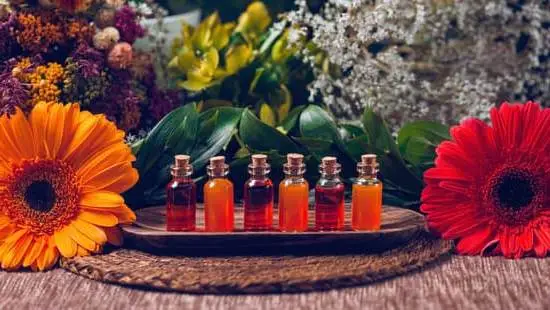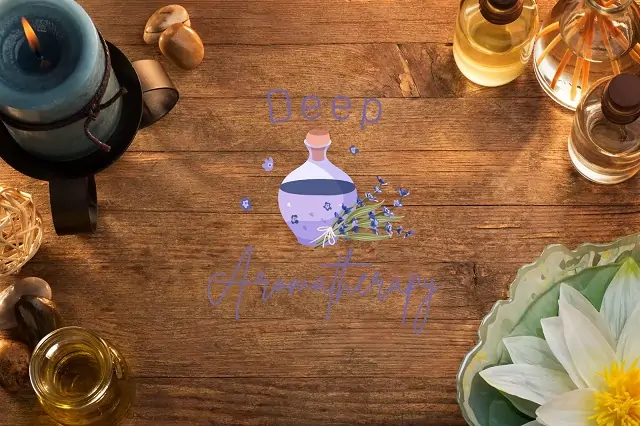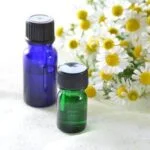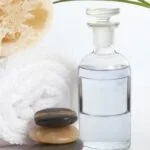Are you wondering, “How can I do aromatherapy at home?” Aromatherapy is a holistic healing treatment that uses natural plant extracts to promote health and well-being. In this article, we will explore the world of aromatherapy and discover how you can incorporate it into your daily routine from the comfort of your own home.
Aromatherapy has been practiced for centuries as a way to improve physical and mental well-being. By using essential oils extracted from plants, aromatherapy can help alleviate stress, anxiety, and various ailments. Whether through inhalation or topical application, aromatherapy offers a natural and effective way to enhance your overall health.
In the following sections, we will delve into the numerous benefits of aromatherapy, explore different essential oils and their properties, learn about various techniques for at-home use, discover how to create the right atmosphere for aromatherapy, and even make DIY blends and recipes. Get ready to embark on an aromatic journey as we guide you through the wonderful world of at-home aromatherapy.
Benefits of Aromatherapy
Aromatherapy is a holistic healing treatment that uses natural plant extracts to promote health and well-being. Essential oils are often used in aromatherapy to enhance the physical and mental health of an individual. There are numerous benefits to incorporating aromatherapy into your daily routine, all of which can be easily achieved at home.
Stress Relief and Relaxation
One of the most well-known benefits of aromatherapy is its ability to reduce stress, anxiety, and promote relaxation. Essential oils such as lavender, chamomile, and rose are known for their calming properties. Diffusing these oils at home or adding a few drops to a warm bath can help create a peaceful environment and alleviate feelings of tension.
Improved Sleep Quality
Aromatherapy can also aid in improving sleep quality. Certain essential oils, such as lavender and bergamot, have sedative effects that can help induce sleep and combat insomnia. Using a diffuser in the bedroom or applying diluted essential oils to pulse points before bedtime can promote a restful night’s sleep.
Boosted Mood and Mental Clarity
In addition to promoting relaxation, aromatherapy has been shown to uplift mood and improve mental clarity. Citrus essential oils like lemon and grapefruit are known for their energizing effects, while peppermint oil can enhance focus and concentration. Incorporating these oils into your daily routine through diffusing, inhalation, or topical application can help uplift your spirits and clear the mind.
Overall, the benefits of aromatherapy are vast and diverse, making it a valuable practice for those looking to improve their overall well-being at home. By learning how to do aromatherapy at home effectively with the right techniques and tools, individuals can experience the countless advantages that this natural therapy has to offer.
Essential Oils and Their Properties
Understanding Essential Oils
Essential oils are highly concentrated plant extracts that capture the natural aroma and flavor of the plant. These oils are commonly used in aromatherapy to promote relaxation, improve mood, and support overall well-being. Each essential oil has its own unique properties and benefits, making it important to understand their individual characteristics before using them for at-home aromatherapy.
Popular Essential Oils and Their Properties
There are numerous essential oils available, each with its own therapeutic benefits. Some popular essential oils used in aromatherapy include lavender, peppermint, eucalyptus, tea tree, and citrus oils like lemon and orange. Lavender is known for its calming and soothing properties, while peppermint is invigorating and can help with mental clarity.
Eucalyptus is often used for respiratory support, while tea tree oil is valued for its antibacterial properties. Citrus oils are uplifting and energizing. Understanding the specific properties of these essential oils can help you choose the right ones for your at-home aromatherapy practice.
Choosing the Right Essential Oils for Your Needs
When selecting essential oils for at-home aromatherapy, consider your specific needs and desired outcomes. Whether you’re looking to alleviate stress, improve sleep quality, or boost your mood, there are different essential oils to help achieve those goals.
It’s important to research the properties of each oil and consider how they can address your individual concerns. Experimenting with different combinations of essential oils can also help you create personalized blends that suit your preferences and promote a positive atmosphere in your home.
Aromatherapy Techniques for at-Home Use
When it comes to practicing aromatherapy at home, there are several techniques that you can easily incorporate into your daily routine. One popular method is through the use of a diffuser, which disperses the essential oils into the air, allowing you to inhale the aromatic fragrance. Diffusers come in various types such as ultrasonic, nebulizing, heat, and evaporative diffusers. Each type has its own unique way of distributing the essential oils into the air.
Another effective technique is through inhalation. You can add a few drops of your chosen essential oil to a bowl of steaming hot water and then cover your head and the bowl with a towel. Inhale deeply for a few minutes to enjoy the benefits of the essential oils. This method is particularly useful for relieving sinus congestion or headaches.
Additionally, you can also apply essential oils topically by diluting them with a carrier oil and using them for massage or adding them to bathwater. When applying essential oils directly to the skin, it’s crucial to perform a patch test first to ensure that you don’t have any adverse reactions.
| Aromatherapy Technique | Description |
|---|---|
| Diffuser | Dispersion of essential oils into the air through different types of diffusers |
| Inhalation | Addition of essential oils to hot water for inhalation purposes |
| Topical Application | Diluting essential oils with carrier oil and applying them on the skin for massage or bath purposes |
Creating the Right Atmosphere for Aromatherapy
When it comes to aromatherapy, creating the right atmosphere is essential for maximizing the benefits of this practice. The ambiance of your space can greatly impact the effectiveness of the essential oils and techniques used in aromatherapy. To create the perfect atmosphere for aromatherapy at home, consider implementing the following tips and tricks.
First and foremost, it’s important to choose a quiet and calm space for your aromatherapy session. This will help you relax and fully immerse yourself in the experience. Whether it’s a designated room or simply a corner of your home, make sure the area is free from distractions and conducive to relaxation.
In addition to finding a peaceful location, consider using soft lighting, such as candles or dimmed lamps, to create a soothing atmosphere. Soft, natural light can further enhance the calming effects of aromatherapy. You may also want to play some gentle music in the background to elevate your experience. Classical music, sounds of nature, or meditation tracks can all complement the relaxing effects of aromatherapy techniques.
To fully enjoy the benefits of aromatherapy at home, ensure that your chosen space is well-ventilated. Proper ventilation will not only disperse the aroma more effectively but also prevent any overwhelming scent buildup. Opening windows or using a fan can help maintain fresh air flow during your aromatherapy sessions. By paying attention to these details, you can set up an ideal atmosphere for practicing aromatherapy at home and reap its full benefits.
DIY Aromatherapy Blends and Recipes
Aromatherapy is a popular practice that involves using natural plant extracts such as essential oils to promote the health and well-being of the body, mind, and spirit. It can be easily practiced at home using various blends and recipes tailored to individual needs and preferences. Making your own aromatherapy blends can be a fun and creative way to explore the benefits of different essential oils and create personalized products for personal use.
When creating your own aromatherapy blends, it’s important to have a good understanding of the properties of different essential oils. Essential oils have various therapeutic properties that can help with relaxation, boosting energy, improving focus, alleviating stress, and more. For example, lavender oil is known for its calming effects, while peppermint oil is often used for increasing energy and mental clarity.
One simple way to use aromatherapy at home is by creating a customized room spray or linen spray. To make a basic room spray, you’ll need distilled water, witch hazel or vodka as an emulsifier, and your choice of essential oils.
Simply mix the ingredients in a spray bottle and shake well before each use. You can customize the blend based on your preferences – for example, combining lavender and cedarwood for a calming effect or lemon and eucalyptus for an uplifting atmosphere.
| Aromatherapy Blend | Benefit |
|---|---|
| Lavender + Cedarwood | Calming effect |
| Lemon + Eucalyptus | Uplifting atmosphere |
Aromatherapy Tools and Accessories
When practicing aromatherapy at home, having the right tools and accessories can enhance your experience and make it more effective. Here are some essential items that you can use to incorporate aromatherapy into your daily routine:
- Essential Oils: The key component of aromatherapy, essential oils are concentrated extracts from plants that have various therapeutic properties. Some popular essential oils used in aromatherapy include lavender for relaxation, peppermint for energy, and eucalyptus for respiratory support.
- Diffusers: A diffuser is a device that disperses essential oils into the air, allowing you to enjoy their aroma and benefits throughout a room. There are several types of diffusers available, including ultrasonic, nebulizing, and heat-based diffusers. Choose one that suits your preferences and needs.
- Carrier Oils: Carrier oils are used to dilute essential oils before applying them to the skin during massage or skincare routines. Some common carrier oils include coconut oil, sweet almond oil, and jojoba oil.
- Storage Containers: Proper storage is important for maintaining the quality of your essential oils. Dark glass bottles are recommended for storing essential oils, as they help protect the oils from light exposure.
These tools and accessories are just a few examples of what you can use to create a soothing and therapeutic atmosphere at home through aromatherapy. By investing in these items, you can customize your aromatherapy practice to cater to your specific needs and preferences.
Remember that when using essential oils at home, it’s important to educate yourself about proper usage and safety precautions. Always read the instructions on each product label carefully before using them for aromatherapy purposes.
Safety Precautions and Tips for Aromatherapy at Home
Aromatherapy is a great way to relax and improve your overall well-being at home. However, it’s important to keep in mind some safety precautions and tips to ensure that you’re getting the most benefits out of this practice without any potential risks.
Here are some safety precautions and tips for aromatherapy at home:
1. Dilution: When using essential oils for aromatherapy, it’s crucial to dilute them properly with a carrier oil such as coconut oil or almond oil. This helps to prevent skin irritation or sensitization. A general rule of thumb is to use 1-2 drops of essential oil per tablespoon of carrier oil.
2. Patch Test: Before using any new essential oil, perform a patch test on a small area of your skin to check for any allergic reactions or sensitivities. This is especially important if you have sensitive skin or allergies.
3. Storage: Essential oils should be stored in dark glass bottles away from direct sunlight and heat. This helps to preserve their potency and prevent them from oxidizing.
4. Keep Away from Children and Pets: It’s important to keep essential oils out of reach of children and pets, as ingesting certain oils can be toxic for them.
5. Consult with a Professional: If you have any underlying health conditions or are pregnant, it’s best to consult with a qualified aromatherapist or healthcare professional before using essential oils for aromatherapy.
By following these safety precautions and tips, you can enjoy the benefits of aromatherapy at home without any potential risks. Remember to always do your research and educate yourself on the proper usage of essential oils for aromatherapy.
Conclusion and Resources for Further Learning
In conclusion, aromatherapy is a wonderful and accessible way to promote health and wellness at home. With the right essential oils, techniques, and atmosphere, anyone can enjoy the benefits of aromatherapy in their own space. From reducing stress and anxiety to improving sleep and focus, the potential benefits are numerous.
By learning about the properties of different essential oils and how they can be used in blends, individuals can tailor their aromatherapy practice to their specific needs and preferences. It’s important to remember that safety precautions should always be observed when using essential oils, such as proper dilution and avoiding certain oils during pregnancy or around pets.
For those who want to delve deeper into the world of aromatherapy, there are plenty of resources available for further learning. Books, online courses, and workshops can provide additional knowledge and techniques for incorporating aromatherapy into daily life. Whether you’re new to aromatherapy or have been practicing for years, there’s always more to explore and learn about this ancient healing art.
As people continue to seek holistic approaches to health and self-care, aromatherapy offers a natural and enjoyable way to support overall well-being. By taking the time to learn how to do aromatherapy at home properly through resources like books or online courses, individuals can create a personalized practice that fits seamlessly into their lifestyle. The power of scent is undeniable, and with some education and experimentation everyone can harness it for their own benefit.
Frequently Asked Questions
How Can I Practice Aromatherapy at Home?
You can practice aromatherapy at home by using essential oils in a diffuser, taking relaxing baths with aromatic oils, or applying diluted essential oils to your skin. You can also create your own blends for different purposes such as relaxation or energy.
How Do You Make Aromatherapy at Home?
Making aromatherapy at home involves obtaining high-quality essential oils and carrier oils, as well as a diffuser if desired. You can then use these ingredients to create your own personalized blends for massages, inhalation, or diffusion in your living space.
How Do I Do Aromatherapy?
To do aromatherapy, you can start by choosing a method such as inhalation, topical application, or diffusion. Then select the appropriate essential oils for your intended purpose and use them safely in accordance with recommended guidelines to experience their therapeutic benefits.

Are you looking for a natural way to improve your health and wellbeing?
If so, aromatherapy may be the answer for you.






